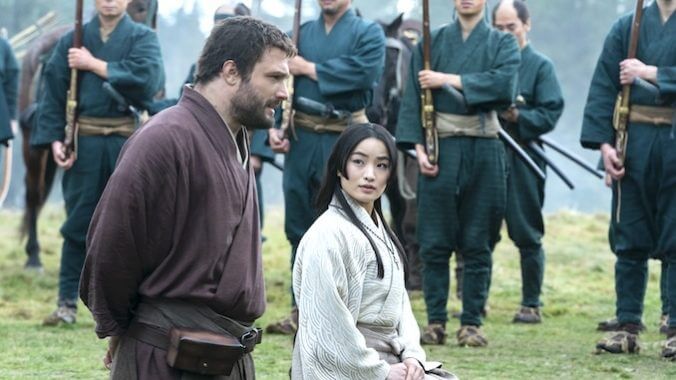FX’s Shōgun Is Proof That Adaptations Can Reinvent Characters for the Better
Photo Courtesy of FX

When FX’s Shōgun was announced back in 2018, I was excited yet apprehensive. James Clavell’s novel is a masterwork of historical fiction, yet it is undeniably a product of its time. The main hero feels like a quintessential example of the “white savior complex,” and beyond him, the novel’s Japanese characters feel one-note. Instead of relegating the supporting figures of Clavell’s work to the background of this new series, the show’s creators peel back the pages and weave in their own writings to craft some of the best on-screen characters of the year. When a series like this is made—one directed towards a Western audience—fears regarding the way in which characters of color will not only be treated but represented arise. Evidently, Shōgun was placed in the right hands, with this version of the story allowing viewers access to the inner lives of characters beyond the story’s hero.
In FX’s Shōgun, John Blackthorne is perhaps one of the series’ least interesting characters, despite being its protagonist. This isn’t to say that Cosmo Jarvis isn’t illuminating when he’s on screen, however, he at times takes a back seat for the people he’s surrounded by, giving these characters and the actors who inhabit them more than a chance to shine. Tadanobu Asano, who plays the cunning Kashigi Yabushige, is given free rein to showcase the brutality—and charisma—of his scene-stealing character, one who is prevalent in the novel and the 1980 miniseries, but here feels different.
He’s fleshed out more like his contemporaries, less so a hokey villain and instead a man who’s desperation for power consumes him. Each time Asano is on screen, you can’t help but wonder why the Thor films he was a part of underutilized him so severely. And this is the case for many of the on screen talent. Shōgun uses Japanese actors who have been relegated to the background of North American screens for decades, and finally allows them space to craft some of the best performances of the year so far.
“You don’t know me,” Blackwood says to the pirate Rodrigues (Néstor Carbonell) at the end of Episode 2, to which he replies “I’ve known a thousand of you.” It’s here that it becomes clear that, while Blackthorne may be the central protagonist of this story, he is not the sole narrator. He emulates the hero of stories similar to this kind, but in this reinvention, he is instead one of many heroes. Here, under the care of executive producers Rachel Kondo and Justin Marks, Blackthorne’s existence is used to showcase a turning point for not only feudal Japan, but for the lives of the characters around him. In having him not be the sole viewpoint audiences see this story through, the world of Shōgun and its characters becomes even more complex.
When it comes to this new series, there’s one character who has been almost completely reinvented, turning her into one of the best written women in recent television. In Clavell’s novel and its first adaptation, Lady Toda Mariko (Anna Sawai) exists almost strictly as a love interest for Blackthorne, devoid not necessarily of motivations, but reasonings for these motivations. Like the previous two renditions, she and Blackthorne are introduced when Lord Toranaga (Hiroyuki Sanada) calls on her to become the man’s translator, as she is one of the few Japanese characters fluent in Portugese (which the English dialogue is a stand-in for).
-

-

-

-

-

-

-

-

-

-

-

-

-

-

-

-

-

-

-

-

-

-

-

-

-

-

-

-

-

-

-

-

-

-

-

-

-

-

-

-








































